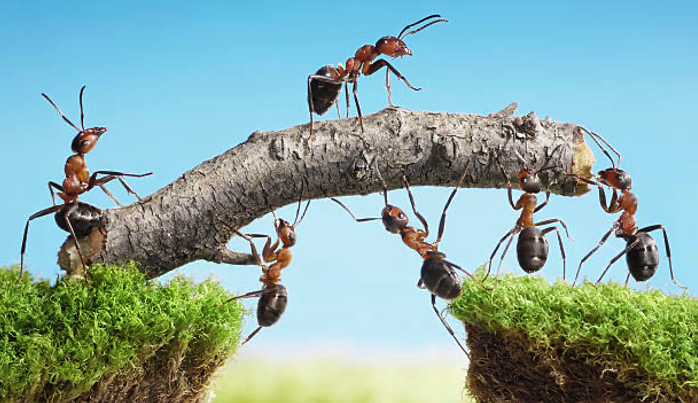"What about X?"


Last week, in discussing the first five of the Thirty Nine Articles, I promised to share the article “Ants used to be so superstitious!” This is a brief interlude before we continue on with the Thirty Nine Articles next week.
Ants used to be so superstitious! While we ants know we control our own affairs, we had a common belief which has just been overcome in recent generations: humans. The word “human”, of course, means “unknown beings of intelligence and great proportion.” As you know, there was quite the established huology around humans, and many earnest arguments: were the humans only “out there”, or could they be “in here, impacting the nest directly”? Were there different types of “human”?
Some ants even claimed they had seen or heard humans (even walked on them!), but of course we dismiss this now as, if not silliness, outright lunacy. Our ant scientists have studied all occasions of supposed human-ant interactions extensively, using the criteria that, if real, it should be possible to independently confirm the “facts” – and every time we scrupulously re-created all the exact circumstances of the supposed human-visit, well … no human ever visited.
Our authorities throughout history have agreed with and corroborated the existence of humans, but then, we don’t pay much attention to “authorities” anymore. Everyone knows the old beliefs are just superstition and blind seeking of power by ignorant ants.
Many different hypotheses have been raised, and some facts are now known. For example, the “time of the big stick” when, just two generations ago, a huge stick (at least 3 cm long!) had poked and prodded into the nest, tearing out many tunnels, even going so far as to intrude into the egg sanctuary. Initially, many had cried: “human!” but now it is widely known that, as the anthill was at the base of a tree, and as from time-to-time strong winds can blow along the ground and even into the anthill itself, obviously a strange and capricious wind had cavorted that massive stick through much of the nest. Some ant scientists have now repeated this phenomenon in their lab, using (of course) scale model sticks and winds of comparative velocity.
There was also the time of the mysterious flattening of much of the mound, with all that was left being massive imprints of a curious tread mark. Again, scientists have come to the rescue, showing in their lab that this was the work of strange heavy leaves being thrown down from the tree above with massive force by, again, a strange wind.
While we ants widely agree that there are strange and massive beings outside of our hill, some of which are extremely fearful like the terrifying and somewhat mythical anteater (often used to scare young ants when they are being bad), it is now common knowledge that there is no such thing as a human, and there never was. With the rule of “never accept anything unless you can prove it with your own mandibles”, ants are now so much more enlightened and better off. Those who still insist on humans are of course ridiculed and, well, best left to themselves.
"… if you have ears to hear, then hear …”
~~~~~~~~~~~~~~~~
+David